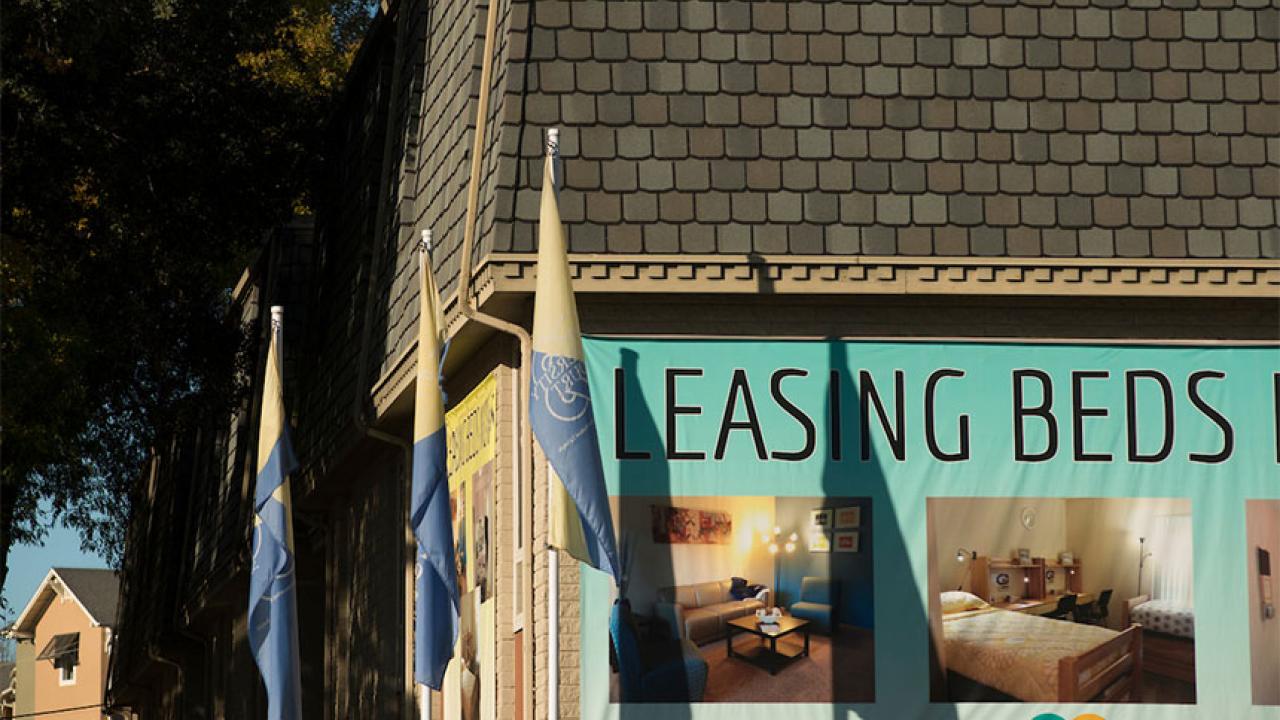Apartment vacancies in the city of Davis reached some of their highest rates in more than 40 years as University of California, Davis, students continued with mostly remote studies in the COVID-19 pandemic, according to a fall survey released today (Feb. 3).
The blended vacancy rate of 12.2 percent — including apartments leased by the unit and by the bed — compares with 1.0 percent in fall 2019. This is the highest vacancy rate since the report started offering a combined rate for the two types of leases with the fall 2016 survey.
The 8.4 percent vacancy rate for apartments leased by the unit — which account for 83 percent of the market-rate rental inventory — is second only to the 1992 vacancy rate of 8.7 percent. Among the bed-leased units, 29.8 percent were vacant, the highest rate since the report, beginning with the fall 2013 survey, has provided statistics for these types of units.
Rent for bed- and unit-leased apartments increased by a combined average of 3.1 percent in fall 2020.
The results are from the university’s annual vacancy- and rental-rate survey, conducted since at least 1975 to provide the campus and surrounding communities with information to support planning.
The campus announced in December that it plans to return to in-person instruction for fall and even during the pandemic has continued planning and constructing new student housing and addressing issues of affordability of student housing more broadly.
The impact of the pandemic
Roughly 75 percent of responding complexes reported some direct impact from the pandemic. In addition to increased vacancies, landlords noted broken leases and units fully leased but never occupied. Their implementation of COVID-19 safety protocols included modified staffing; limitations on offices hours; and adjusting access to on-site amenities such as fitness centers, pools and spas, and shared laundry facilities.
Michael Sheehan, associate vice chancellor for Housing, Dining and Divisional Operations in Student Affairs, said some local apartment owners have worked in close collaboration with campus officials to ensure consistency with state and local health orders and have created plans for isolation and quarantine spaces to assist their residents.
Twenty-one complexes reported applying for the federal Paycheck Protection Plan for loans to help keep their workforce employed during the pandemic. The 16 that were successful had an average of about 45 units.
Vacancy rates
According to the survey, 570 apartments, or 8.4 percent, of 6,797 leased by unit were vacant and available for lease, compared with 0.6 percent vacant last year.
Among the 1,352 units leased by the bed rather than the unit as a whole, 1,283, or 29.8 percent of the 4,300 beds, were vacant. Last year, 3.4 percent of beds in this type of unit were vacant.
Rental rates
The average monthly rent for unit-leased apartments of all sizes — from studios to four or more bedrooms — was up 2.2 percent, from $1,901 last year to $1,943. The average rate for a bed lease rose 4.7 percent, from $1,003 in fall 2019 to $1,050. The rental rate for all lease types increased 3.1 percent, from $2,117 last fall to $2,183.
While average rents increased, more than 33 percent of respondents reported decreasing their asking rents to fill vacancies. Reductions ranged from 3 percent to 15 percent, with an average of 10 percent.
Representatives of 44 complexes — up from 13 last year — said they offered incentives and move-in specials to help fill vacancies and attract new residents. Common incentives and specials included free or discounted rent, waived application fees, gift cards and giveaways.
A total of 114 apartment complexes and property management companies representing 8,938 rental units responded to the survey, commissioned by UC Davis Student Housing and Dining Services. The report’s calculations exclude units rented at below-market rates; only the 8,149 market-rate units were included.
On-campus occupancy and capacity
As remote instruction continued through the fall, UC Davis housed about 5,970 students and their family members. An additional 400 beds have been dedicated for isolating and quarantining students as needed.
The campus currently has capacity to accommodate about 11,850 students. Using the Long Range Development Plan (LRDP) baseline of about 9,800 beds in 2016-17, it anticipates increasing on-campus housing to more than 15,000 beds by fall 2023.
Among housing projects in planning and construction:
- Fall 2020 — The first phase of The Green at West Village opened and added more than 1,000 beds for transfer and continuing students.
- Fall 2021 — The Green at West Village is scheduled to provide an additional 2,300 beds.
- Fall 2021 — The Shasta Hall project is on track to open a year early with 800 residence hall beds for freshman students.
- Fall 2023 — Anticipated for fall 2023, the expanded Orchard Park redevelopment project will provide up to 200 two-bedroom units for students with families and housing for up to 1,200 graduate students.
Enrollment
In fall 2020, a total of 40,032 students enrolled at UC Davis. While most students are associated with the campus in Davis, about 2,000 of the total participate in programs at locations outside of Davis, such as the Sacramento campus.
Media Resources
Michael Sheehan, Student Affairs, 530-752-0339, mtsheehan@ucdavis.edu
Julia Ann Easley, News and Media Relations, 530-752-8248, jaeasley@ucdavis.edu
